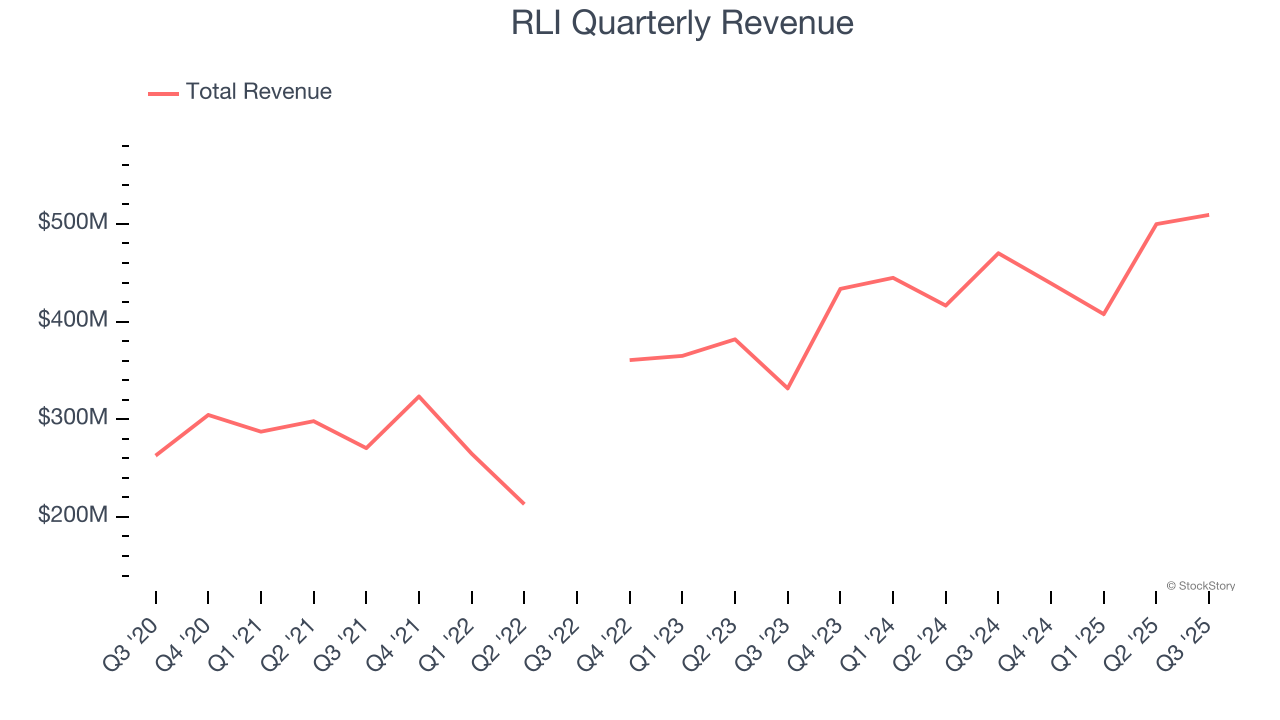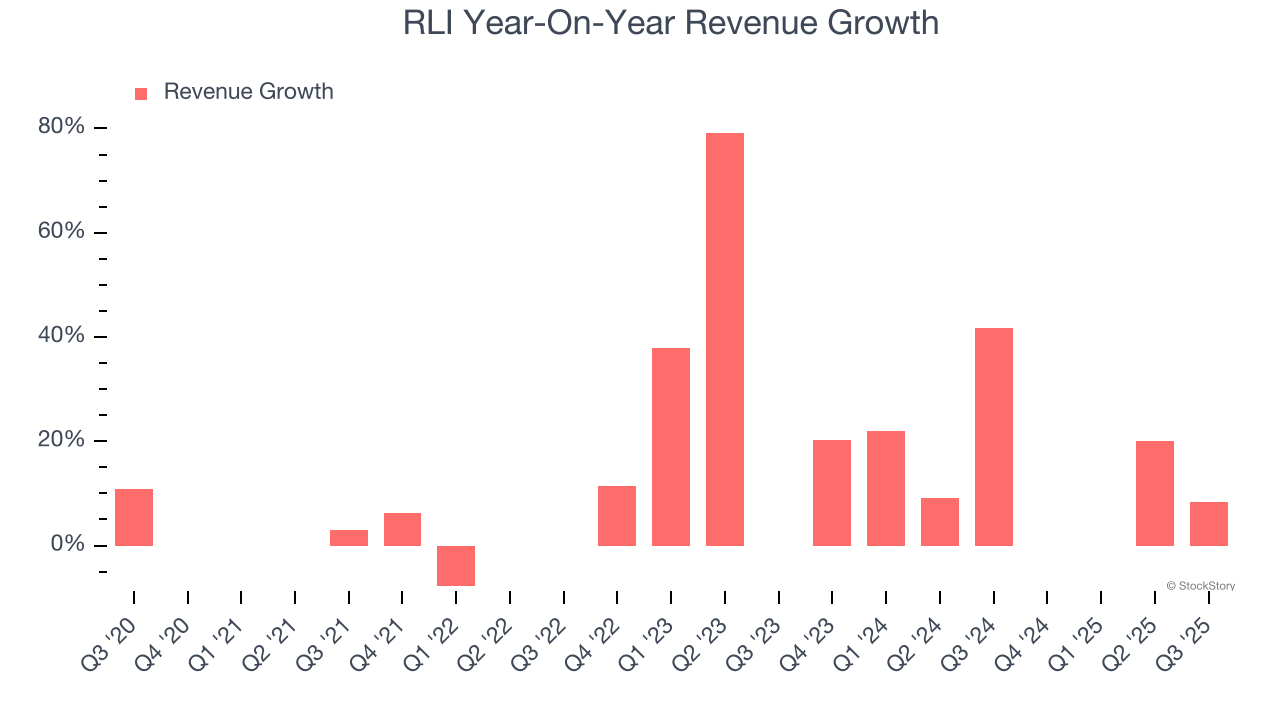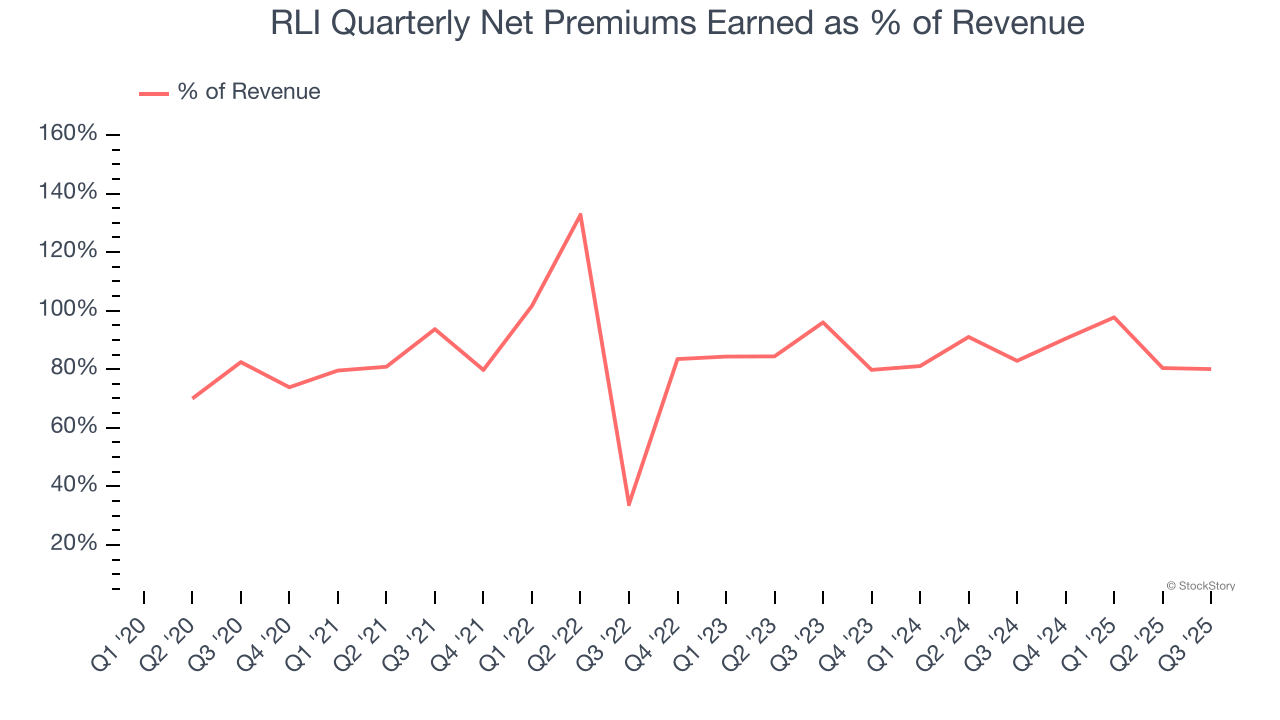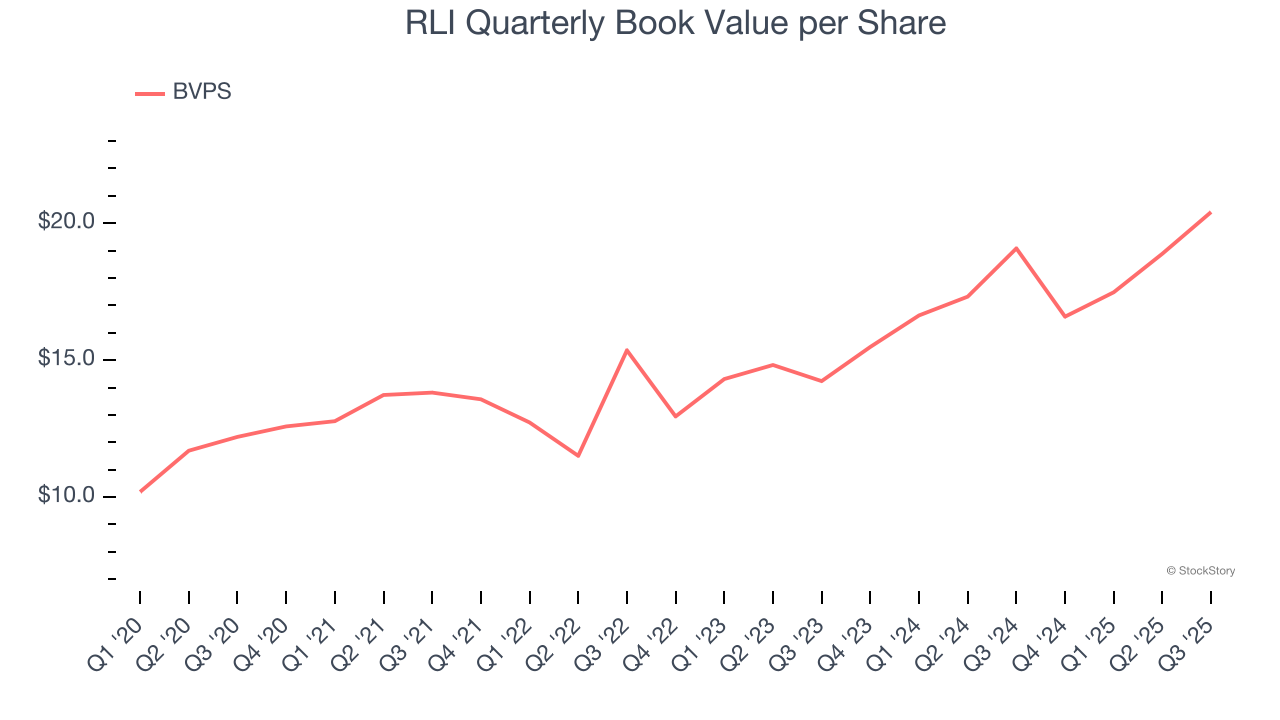
Specialty insurance provider RLI (NYSE: RLI) announced better-than-expected revenue in Q3 CY2025, with sales up 8.4% year on year to $509.3 million. Its non-GAAP profit of $0.83 per share was 19% above analysts’ consensus estimates.
Is now the time to buy RLI? Find out by accessing our full research report, it’s free for active Edge members.
RLI (RLI) Q3 CY2025 Highlights:
- Net Premiums Earned: $407.7 million vs analyst estimates of $406.4 million (4.7% year-on-year growth, in line)
- Revenue: $509.3 million vs analyst estimates of $453 million (8.4% year-on-year growth, 12.4% beat)
- Combined Ratio: 85.1% vs analyst estimates of 88.3% (323.3 basis point beat)
- Adjusted EPS: $0.83 vs analyst estimates of $0.70 (19% beat)
- Book Value per Share: $20.41 vs analyst estimates of $21.31 (7% year-on-year growth, 4.2% miss)
- Market Capitalization: $5.48 billion
“We are pleased to report another quarter of profitable results,” said RLI Corp. President & CEO Craig Kliethermes.
Company Overview
Founded in 1965 and named after its original focus on "replacement lens insurance" for contact lens wearers, RLI (NYSE: RLI) is a specialty insurance company that underwrites property, casualty, and surety products through wholesale brokers, independent agents, and carrier partnerships.
Revenue Growth
In general, insurance companies earn revenue from three primary sources. The first is the core insurance business itself, often called underwriting and represented in the income statement as premiums earned. The second source is investment income from investing the “float” (premiums collected upfront not yet paid out as claims) in assets such as fixed-income assets and equities. The third is fees from various sources such as policy administration, annuities, or other value-added services. Over the last five years, RLI grew its revenue at an exceptional 14.5% compounded annual growth rate. Its growth beat the average insurance company and shows its offerings resonate with customers, a helpful starting point for our analysis.
 Note: Quarters not shown were determined to be outliers, impacted by outsized investment gains/losses that are not indicative of the recurring fundamentals of the business.
Note: Quarters not shown were determined to be outliers, impacted by outsized investment gains/losses that are not indicative of the recurring fundamentals of the business.Long-term growth is the most important, but within financials, a half-decade historical view may miss recent interest rate changes and market returns. RLI’s annualized revenue growth of 13.6% over the last two years aligns with its five-year trend, suggesting its demand was predictably strong.  Note: Quarters not shown were determined to be outliers, impacted by outsized investment gains/losses that are not indicative of the recurring fundamentals of the business.
Note: Quarters not shown were determined to be outliers, impacted by outsized investment gains/losses that are not indicative of the recurring fundamentals of the business.
This quarter, RLI reported year-on-year revenue growth of 8.4%, and its $509.3 million of revenue exceeded Wall Street’s estimates by 12.4%.
Net premiums earned made up 80.9% of the company’s total revenue during the last five years, meaning RLI barely relies on non-insurance activities to drive its overall growth.
 Note: Quarters not shown were determined to be outliers, impacted by outsized investment gains/losses that are not indicative of the recurring fundamentals of the business.
Note: Quarters not shown were determined to be outliers, impacted by outsized investment gains/losses that are not indicative of the recurring fundamentals of the business.Markets consistently prioritize net premiums earned growth over investment and fee income, recognizing its superior quality as a core indicator of the company’s underwriting success and market penetration.
Unless you’ve been living under a rock, it should be obvious by now that generative AI is going to have a huge impact on how large corporations do business. While Nvidia and AMD are trading close to all-time highs, we prefer a lesser-known (but still profitable) stock benefiting from the rise of AI. Click here to access our free report one of our favorites growth stories.
Book Value Per Share (BVPS)
Insurance companies are balance sheet businesses, collecting premiums upfront and paying out claims over time. The float–premiums collected but not yet paid out–are invested, creating an asset base supported by a liability structure. Book value per share (BVPS) captures this dynamic by measuring these assets (investment portfolio, cash, reinsurance recoverables) less liabilities (claim reserves, debt, future policy benefits). BVPS is essentially the residual value for shareholders.
We therefore consider BVPS very important to track for insurers and a metric that sheds light on business quality because it reflects long-term capital growth and is harder to manipulate than more commonly-used metrics like EPS.
RLI’s BVPS grew at an impressive 10.8% annual clip over the last five years. BVPS growth has also accelerated recently, growing by 19.7% annually over the last two years from $14.24 to $20.41 per share.

Over the next 12 months, Consensus estimates call for RLI’s BVPS to grow by 9.5% to $21.31, mediocre growth rate.
Key Takeaways from RLI’s Q3 Results
We were impressed by how significantly RLI blew past analysts’ revenue expectations this quarter. We were also glad its EPS outperformed Wall Street’s estimates on a better combined ratio. On the other hand, its book value per share missed. Overall, this print had some key positives. The stock remained flat at $60 immediately following the results.
RLI had an encouraging quarter, but one earnings result doesn’t necessarily make the stock a buy. Let’s see if this is a good investment. When making that decision, it’s important to consider its valuation, business qualities, as well as what has happened in the latest quarter. We cover that in our actionable full research report which you can read here, it’s free for active Edge members.





